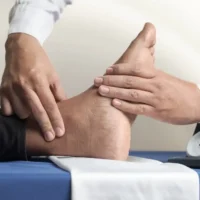This October, as we focus on Breast Awareness month, I wanted to take an opportunity to break away from Covid talk and shift the focus towards raising breast awareness for the early detection of Breast Cancer, the most commonly diagnosed cancer in Australia.
Did you know:
- 1 in 7 women & 1 in 700 men will be diagnosed with breast cancer in their lifetime
- 55 Aussies are diagnosed every day, that’s 20,000 every year
- 80% of breast cancers occurs in those over the age of 50
- 1000 women under the age of 40 were diagnosed in 2020 – I was one of them
- Sadly 3000 people lost their lives to breast cancer in 2021
As a cancer breast cancer survivor, and a health professional who works with breasts, here’s what I would I’d like you to know:
- You’re never too young to “get to know” your breasts. Being ‘breast aware’ means becoming familiar with your normal. You need to learn the look and feel of your breasts so that you can report any unusual changes to your doctor as soon as possible. This can be difficult in younger women in their 20s and 30s as they generally have denser breasts, are lactating/breastfeeding, or have undergone breast augmentation such as implants, all of which can change the “normal” feel of your breasts.
- Breast cancer is the most common cancer in women ages 15 to 39. Approximately 40% of these cancers are detected by women who feel a lump, so establishing a regular breast self-exam/routine is very important.
- Young women are often diagnosed with more advanced and/or more aggressive subtypes of breast cancer than older women. There are no routine breast cancer screening tools for women younger than 40 years old, so it is vital that you perform a regular screen and get any abnormailities checked out.
- Breast cancer risk increases slightly for approximately 10 years after a first birth. After that, it drops below the risk of women who don’t have children.
- When in doubt get checked out!
Being breast aware means routinely undertaking breast self-exams as part of your overall breast cancer screening strategy. Everyone’s breasts look and feel different. You may have lumpy breasts, one breast larger than the other, breasts that are different shapes, or one or both nipples that are pulled in (inverted), which can be there from birth or happen when the breasts are developing. There’s no right or wrong way to check your breasts for any changes. You can do this in the bath or shower, when you use body lotion, or when you get dressed. Just decide what you are comfortable with and what suits you best. Remember to check all parts of your breast, your armpits, and all the way up to your collarbone.

Know what to look for:
The importance of breast awareness, from personal experience:
I had a new, painful lump that did not go away. Deciding I should practice what I preach to my patients about getting checkups, I went to my GP and had him assess it. What followed was an ultrasound and mammogram, followed by a core biopsy to confirm it was cancer. That was the easy part. Then came the treatment…
If you learn nothing else from this post just remember “when in doubt get checked out”. Thanks to many generous donations to organisations such as the National Breast Cancer Foundation and the Breast Cancer Network of Australia who help fund life-saving research in breast cancer diagnosis and treatment, the 5-year survival rate is now 91%! But we know that the earlier these changes in breast tissue are detected and cancer diagnosed the better the outcome, and the less invasive the treatment course can be.
So please join me this October in becoming more Breast Aware – it just might help save your life 🙂
XX
Dr. Reena Murray
References:
https://www.hopkinsmedicine.org/health/wellness-and-prevention/breast-self-awareness
https://www.bcna.org.au/breast-health-awareness/
Note: Thanks Teille for helping me compile this blog.







